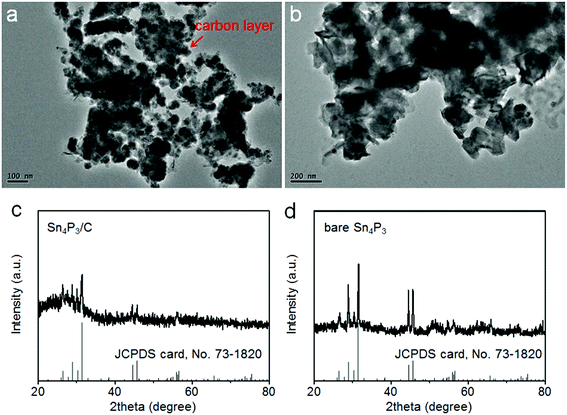 Open Access Article
Open Access ArticleCreative Commons Attribution 3.0 Unported Licence
Correction: Engineering tin phosphides@carbon yolk–shell nanocube structures as a highly stable anode material for sodium-ion batteries
Lianbo
Ma
*ab,
Pengjie
Yan
b,
Shikui
Wu
bc,
Guoyin
Zhu
*a and
Yalong
Shen
*bd
aKey Laboratory of Mesoscopic Chemistry of MOE, School of Chemistry and Chemical Engineering, Nanjing University, Nanjing, 210093, China. E-mail: mlb8976@126.com
bSchool of Chemistry and Chemical Engineering, Jiangsu University, Zhenjiang 212013, PR China. E-mail: shenyalong@njust.edu.cn
cCollege of Pharmacy, Inner Mongolia Medical University, Hohhot 010059, PR China
dMIIT Key Laboratory of Advanced Display Materials and Devices, Institute of Optoelectronics & Nanomaterials, College of Materials Science and Engineering, Nanjing University of Science and Technology, Nanjing, Jiangsu 210094, China
First published on 14th December 2018
Abstract
Correction for ‘Engineering tin phosphides@carbon yolk–shell nanocube structures as a highly stable anode material for sodium-ion batteries’ by Lianbo Ma et al., J. Mater. Chem. A, 2017, 5, 16994–17000.
In the description “As presented in Fig. S3, both Sn4P3/C and bare Sn4P3 materials exhibit much bigger particle sizes, which are ascribed to the aggregation of Sn below its melting point” on p16997 of the published article, the reference to ‘Fig. S3’ should instead read ‘Fig. S2’.
Moreover, in the published version of Fig. S2, the TEM images are wrong and may have been mixed with those of other samples. To avoid any possible misleading, these samples have been prepared and characterized again. The authors would like to update the Fig. S2 with a corrected version, containing new TEM and XRD data, as shown below.
The Royal Society of Chemistry apologises for these errors and any consequent inconvenience to authors and readers.
| This journal is © The Royal Society of Chemistry 2019 |

